I Need A Collection Of Bookmarks.
I need a collection of bookmarks.

I got a couple new bookmarks today, and I thought it would be a good time for a bookmark appreciation post featuring some of my favorites.
More Posts from Thegreenkeeper and Others
Absolutely amazing work, I'd love to have a wall full of those branches in the last photo.









Hordes of Silhouettes Form Trees and Other Figures in New Murals from David de la Mano & Pablo Herrero

Bigby Wolf - Sean Gordon Murphy
This one really tripped me up when I first saw it. Amazing use of perspective and foreshortening in this work though. He was a master at it, foreshor.

In Praise of Dialectics, 1937, Rene Magritte
Size: 54x65 cm Medium: oil, canvas
Hilarious!

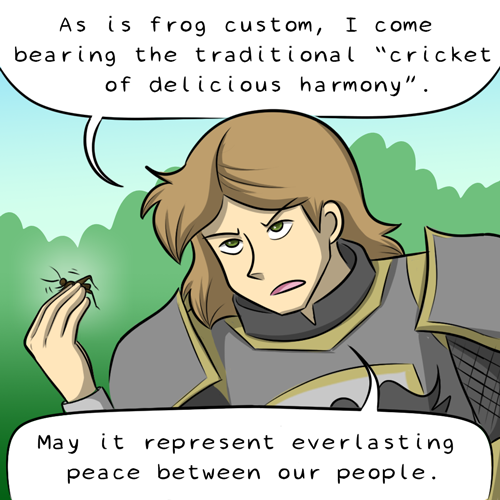
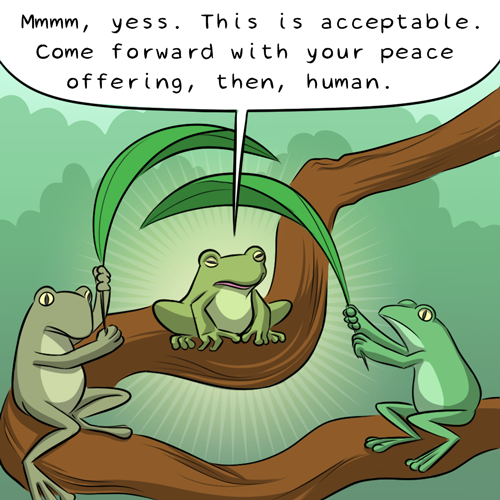


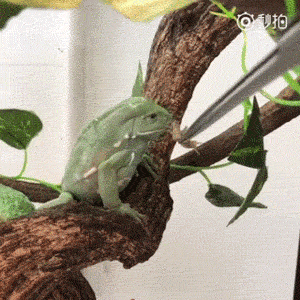
Get that shit outta here! My website – My Facebook page – See me on LINE Webtoon!
https://www.instagram.com/reel/CqRSXNXpV7w/?igshid=NjZiM2M3MzIxNA==
Mmmhmm 😎🍪🎂🍰🍪
This is on my wish list of places I hope to visit one day but probably won't get to. Dreams are just Dreams though, until we are able to make them come true.

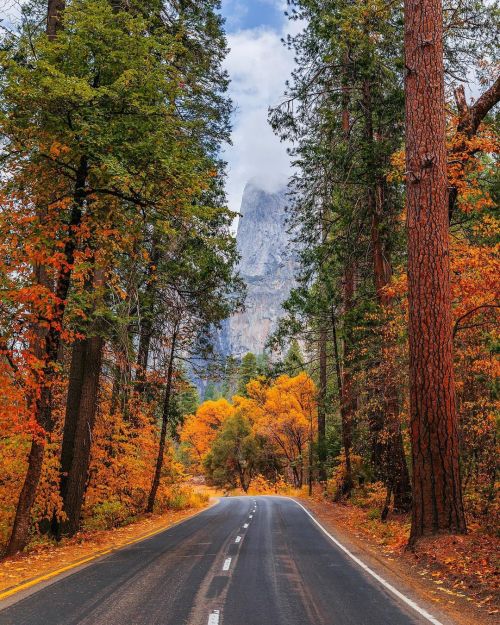


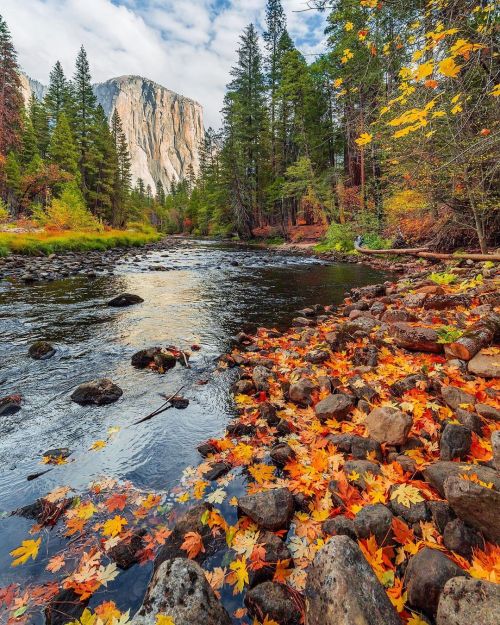
source
Sounds like be


endless list of my kids ♡ richard gansey III
They were always walking away from him. But he never seemed able to walk away from them.
I love cat sidhe folklore.
The Cait Sidhe

Celtic mythology describes Cait Sidhe as a fae spirit that takes the form of a large black cat with a white spot on its chest. People of ancient Ireland believed that cats operated somewhere between the mortal and spiritual realms.
They viewed them as guardians of the gates of the Otherworld.
a link between humans, the Otherworld and other realms. According to Celtic folklore, spirits that took the form of Cait Sidhe, a large black cat, could steal the soul of the dead before the Gods, devil or the angels could claim it. Where they take the souls nobody knows.
Northern Scottish believed hearing a Cait Sidhe scream or yowl meant you or someone in your family would die soon while the centeral and southern Scottish saw them as gentle guardians of death that guided lost souls into the place after.
The Insular Scottish believed they were the ones that warned you of death but also would grant you wishes if summoned and given offerings.
The Icelandic people have the yule cat which is put in the cait Sidhe terminology.
From what I can tell Russians and Germans held the black cats are witches in disguise belief but they also had a fearful respect if them.
Another Irish tradition derived from the ancient belief that certain spirits took the form of a cat happens on All Hallows Eve, known in Ireland as Samhain, hallows eve, all hallowsv day and just halloween on that night, spirits, fae and demons would be roaming the earth. Everyone set a dish of milk outside so that when Cait Sidhe passed your house, they would be happy with the offering and bless your home and maybe even your whole blood line. If you did not set out milk, Cait Sidhe would be displeased and disrespected so they'd leave a curse on your livestock and cause the cows to not give milk or bare young. Possibly curse your wife as well woth infertility.
Catholics and Christians took the idea of the Cait Sidhe and erased the fae part. Claiming they were demons sent from hell so they may sell innocent souls..
The mythology of the Cait Sidhe even had it's hold in the Americas. Ingenious people say the black cat as a trickster, african south Americans saw the black cat as a symbol of evil while African north Americans saw them as guardians.
White americans had mixed feelings on black cats but they always held some sort of magical power be that a protector or a trickster.
The neolithic Irish people and many Scottish also believed in the Cait Sidhe but believe that Cait Sidhe were not fairy spirits but were actually witches that could take the form of a cat. It was said that these witches could transform into a cat eight times but if they took the form of a cat on their ninth transformation, they would remain a cat. Many think it's the origin of the saying that cats have nine lives.
This is also thought the term " never cross a black cat's path " comes from since that cat may just be a Cait Sidhe or a witch.
References too the Cait Sidhe can also be found in Edgar Allen Poe's story the black cat✨
Beautiful





Art by Camilla Roeder
Fun facts about the animal symbols behind the seven deadly sins.
The animals of the seven vices
I just wanted to talk a bit about how the seven deadly sins, or seven capital vices, were always associated with animals as symbols (which is quite ironic, given the vices are human in nature). In fact, it is quite funny to see that originally the idea of representing the vices as animals was done as an anthropomorphization. The animals were humanized and designed as a reflection of the sinful humans or the social categories most afflicted by this sin (it was quite common in early Middle-Ages: take La Chanson de Renard, the song of Reynard, this very famous fiction in which animals are used to parody the medieval society). It was only later, as time passed, that the animals came to be considered as the embodiment of sin, not a reflection or symbol of it, and as a result the representations stopped humanizing the animals and started doing the reverse, animalizing the humans as a way to represent sin overtaking them.
Another fun fact to mention - originally the “animals of sin” were quite exotic creatures, like the lion or the whale, because the classification of sins and the whole origin of monotheistic (especially in this case Christian) religions come from “exotic country” like Greece, Turkey, Palestine, the Middle-East. But in the Middle-Ages it was difficult for the priests and churchmembers to make the common folk of Western Europe understand what those animals represented, since they had never seen them. And so they switched with animals much more common in France, England, Germany, be it animals of the wild, like foxes and bears, or city and farm animals, like dogs and goats.
For Pride, the traditional animal nowadays is considered to be the peacock, which was indeed a typical representation of this sin. The peacock, with its beautiful tail and colors, was considered to be an allegory for how prideful people covered themselves in jewels and precious clothes - but the bird cannot hide its “ugly legs” the same way the prideful beauty is only skin-deep. However, as you can note, the peacock truly represents pride in a sense of vanity, and indeed was only used for the pride when the vice of “vanagloria” (vain glory) was fused with the one of superbia (pride).
Before the peacock were the lion and the horse, two animals representing pride in its original sense of arrogance. The horse was the animal that the knights, lords and kings rode, a beast of the upper class, yet you could also fall from the horse’s back or the horse could throw you down, just like the prideful often falls. As for the lion, it was considered to be the “king” and “nobility” of the animals (in La Chanson de Renard, the king is parodied as Noble the Lion), but also a wild, dangerous and ferocious creature (and thus evil).
For Greed, nowadays most people will tell you that the typical animal associated with this vice is the toad. I cannot deny that there is indeed a strong link between this animal and the idea of greed (the first Christian animal allegories of greed include toad), and in general of wealth (in China, they have frog statues that, when you put a coin in their mouth, give you prosperity and money in the future), but the exact reason why is unknown to me at the moment. Some people say the toad was considered a “greedy” creature because it wanted to live both on land and water, unable to just choose one part of the universe like all the other animals. I do not know if this explanation has true cultural basis.
Usually, greed was also represented by several other animals in medieval imagery. On one side, you had the wild ravenous animals: the wolf, seen as a greedy devouring beast, or the fox, which often raided the farms to “steal” the chickens and young animals away (and the fox was always perceived in Middle-ages as a greedy thief). On the other, you had smaller creatures, like the mole (due to living underground and constantly digging the earth, it was a reflection of Greed’s materialism) or the badger. More surprisingly - the monkey or the ape was seen as the animal of greed. Why, you might ask? Because when the bourgeoisie appeared in medieval society, they wanted to flaunt their wealth all the way they could, and one of them was to buy a monkey and show it to all your friends and clients. As a result, the monkey became the symbol of the greedy bourgeois and materialistic merchants that wanted to show off and flaunt their wealth - and the animal of the vice of Greed.
For Lust, nowadays people will tell you the animal is either the cow or the goat.
The cow was not the most widespread representation of lust in the Middle-Ages, in fact it seems more of a modern interpretation. Some point out how the cow was seen by ancient civilizations as associated with love, beauty and sexuality - and it could have been a joke on how the social category of Lust (the same way Pride was kings and noblemen, and Greed bourgeois and merchants) was the one of the “lady” and “noblewomen”, the upper class women (who would be the center of love stories and romances in legends, and often cheat with their husband when they are away at war or for political reasons).
The goat was much more traditional than the cow. The goat (be it the female goat or male goat) was perceived as a symbol of an excessive and aggressive sexual strength, which can only lead to a brutal copulation or a frustration of the desires.
The sow was also often considered to be the animal of lust - where the male pig represents gluttony, the female pig is the other excess of the flesh, a symbol of lasciviousness. But more importantly - the snake was the symbol of lust. The snake which seduced Eve in the garden of Eden to bite into the apple, the snake with its phallic shape, the snake that some theologians considered had sex with Eve and thus eating the apple was but a metaphor for Eve cheating on Adam with the embodiment of temptation and evil.
Nowadays people say that the animal representing Wrath is a bear - pointing out how mother bears are very violent and aggressive when it comes to protecting their young. I have to say that this is however a modern interpretation. It is true that the bear was seen as a being of violence and brutality - but not so much a “wrathful” beast. It was rather considered to be a gluttonous and lustful being. It is true that many wild and aggressive animals were considered symbols of wrath: the leopard, the wolf, the lion… The king of them being the dragon, the physical embodiment of the wildness, dangerousness and destructiveness of nature, the chaotic fires and claws of evil.
But the traditional animal of Wrath was actually the boar. Aggressive and attacking all those around him, charging blindly - just like the wrathful are blinded by rage. It even reflected how wrath was perceived as the vice of suicide: indeed the hunters often used the blind and violent attacks of the boar against him, he went so fast and so blindly he would end up impaled on their sword, the same way the suicidal are blinded by their desire for self-destruction and run towards the “sword”.
The hedgehog also had a role as a symbol of wrath - since he was covered in spikes, he was seen as a reflection of how the wrathful becomes untouchable and drives everyone away by covering themselves in “spikes” harming anyone trying to get close.
Envy’s animal was always considered to be the dog (especially the greyhound). It was due to the idea that the dogs kept fighting between each other for food - and the specific picture of dogs fighting over a bone. A dog unable to stand another one of his species having a bone (literaly something with no meat and thus seen as useless) and trying to steal it away - this was perceived as pure envy.
Other animals close to the dog were perceivd as the embodiment of envy - like the wolf or the fox, wilder cousins of the dog. Envy also had a strong connection to reptilians - be it the snake (that according to some used envy and jealousy to make Eve eat the forbidden fruit), a dragon or a basilisk (that poisons everything around it).
Gluttony’s symbol stayed the same since the ancient times: the pig. An omnivore being perceived as the embodiment of over-eating, who visibly enjoyed a lot the act of eating and wallowed in the mud and his own filfth… That was how the excessive and wasteful gluttons were perceived.
Other animals were also considered symbols of gluttony. The wolf was seen as a hungry devourer (hence why in fairytales he keeps trying to eat everyone), and the bear was also considered to be an embodiment of gluttony and lack of temperance (due to how crazy bears are about honey and how much they can eat - again, in La Chanson de Renard, the character of the bear gets tricked by the protagonist due to his gluttony).
And finally we reach Sloth, or Acedia.
Nowadays people tend to say that the goat or the sloth are the “sloth animals”. The goat, yes, it was perceived as a symbol of laziness (some pretend that this is due to the “scapegoat” which is the easiest and laziest way to get rid of a problem by accusing instead of searching the truth, and while this interpretation is valid, it is probably not the true explanation since the scapegoats weren’t perceived like that in Middle-ages, but anyway). But the sloth was too recently discovered to be a symbol of sloth in traditional art. Of course it is connected to the vice (after all it was NAMED Sloth), but it is not a traditional symbol of it.
The traditional symbol of Sloth (and Acedia, the two being separate yet later fused together) is actually the donkey. Of course many people understand why the donkey is sloth in a pragmatic term - it is said to be a lazy, stubborn beast that you have to force to work. Those more educated will know that the donkey was also seen as the animal unable to choose and incapable of making adecision - there is this story of how a donkey ended up dying of thirst and hunger because it could not decide whether to go right to drink or go left to eat. But what few people know is the religious meaning of the donkey.
You see, the donkey is known to eat thistle. And the thistle, beautiful but that pricks those that take it, is a representation of the temptation of sin. As a result the donkey eating thistle was a symbol for people simply taking the easy way and falling for the temptation of sin (the stuff on the ground that pricks) instead of making an efffort and reaching for the virtue (such as the fruits hanging from the branches of trees).
In modern days, people tend to use snails as a new symbol for sloth.
-
 ekpothegreat reblogged this · 4 years ago
ekpothegreat reblogged this · 4 years ago -
 ekpothegreat liked this · 4 years ago
ekpothegreat liked this · 4 years ago -
 trouble-coupled-in-double reblogged this · 4 years ago
trouble-coupled-in-double reblogged this · 4 years ago -
 serendipity224 liked this · 4 years ago
serendipity224 liked this · 4 years ago -
 serendipity224 reblogged this · 4 years ago
serendipity224 reblogged this · 4 years ago -
 regalxpeaches liked this · 4 years ago
regalxpeaches liked this · 4 years ago -
 kimbooklr reblogged this · 4 years ago
kimbooklr reblogged this · 4 years ago -
 kimbooklr liked this · 4 years ago
kimbooklr liked this · 4 years ago -
 booksarethedream reblogged this · 4 years ago
booksarethedream reblogged this · 4 years ago -
 myelicia liked this · 4 years ago
myelicia liked this · 4 years ago -
 grechmagiccupcake liked this · 4 years ago
grechmagiccupcake liked this · 4 years ago -
 carmenconk16 liked this · 4 years ago
carmenconk16 liked this · 4 years ago -
 bookingforfun liked this · 4 years ago
bookingforfun liked this · 4 years ago -
 laspadasara liked this · 4 years ago
laspadasara liked this · 4 years ago -
 cherry-pie24 reblogged this · 4 years ago
cherry-pie24 reblogged this · 4 years ago -
 usagiminute liked this · 4 years ago
usagiminute liked this · 4 years ago -
 tulip-jojo liked this · 4 years ago
tulip-jojo liked this · 4 years ago -
 senz4ossa liked this · 4 years ago
senz4ossa liked this · 4 years ago -
 dropdeadfemme reblogged this · 4 years ago
dropdeadfemme reblogged this · 4 years ago -
 smirkish liked this · 4 years ago
smirkish liked this · 4 years ago -
 theoretical-dragonologist reblogged this · 4 years ago
theoretical-dragonologist reblogged this · 4 years ago -
 riadhthekey3 liked this · 4 years ago
riadhthekey3 liked this · 4 years ago -
 tea-and-books-addict liked this · 4 years ago
tea-and-books-addict liked this · 4 years ago -
 tea-and-books-addict reblogged this · 4 years ago
tea-and-books-addict reblogged this · 4 years ago -
 nezumichan16 liked this · 4 years ago
nezumichan16 liked this · 4 years ago -
 schrum4077 reblogged this · 4 years ago
schrum4077 reblogged this · 4 years ago -
 schrum4077 liked this · 4 years ago
schrum4077 liked this · 4 years ago -
 danceportal reblogged this · 4 years ago
danceportal reblogged this · 4 years ago -
 danceportal liked this · 4 years ago
danceportal liked this · 4 years ago -
 conhambredelectura liked this · 4 years ago
conhambredelectura liked this · 4 years ago -
 honeybadgeralways liked this · 4 years ago
honeybadgeralways liked this · 4 years ago -
 jjspress liked this · 4 years ago
jjspress liked this · 4 years ago -
 justawishaway liked this · 4 years ago
justawishaway liked this · 4 years ago -
 read2travel reblogged this · 4 years ago
read2travel reblogged this · 4 years ago -
 mountaincrone liked this · 4 years ago
mountaincrone liked this · 4 years ago -
 flowersarehappythings liked this · 4 years ago
flowersarehappythings liked this · 4 years ago -
 bookandcoffeelover reblogged this · 4 years ago
bookandcoffeelover reblogged this · 4 years ago -
 spockiedog liked this · 4 years ago
spockiedog liked this · 4 years ago -
 solarlesbo reblogged this · 4 years ago
solarlesbo reblogged this · 4 years ago -
 cpcksrdmnfnmdftrnsprttn liked this · 4 years ago
cpcksrdmnfnmdftrnsprttn liked this · 4 years ago -
 agardenandlibrary reblogged this · 4 years ago
agardenandlibrary reblogged this · 4 years ago -
 agardenandlibrary liked this · 4 years ago
agardenandlibrary liked this · 4 years ago

-Just Me [In my 30s going on eternity] (A Random Rambling Wordy Nerd and an appreciator of all forms of artistic expression) Being Me- Art, Books, Fantasy, Folklore, Literature, and the Natural World are my Jam.
249 posts